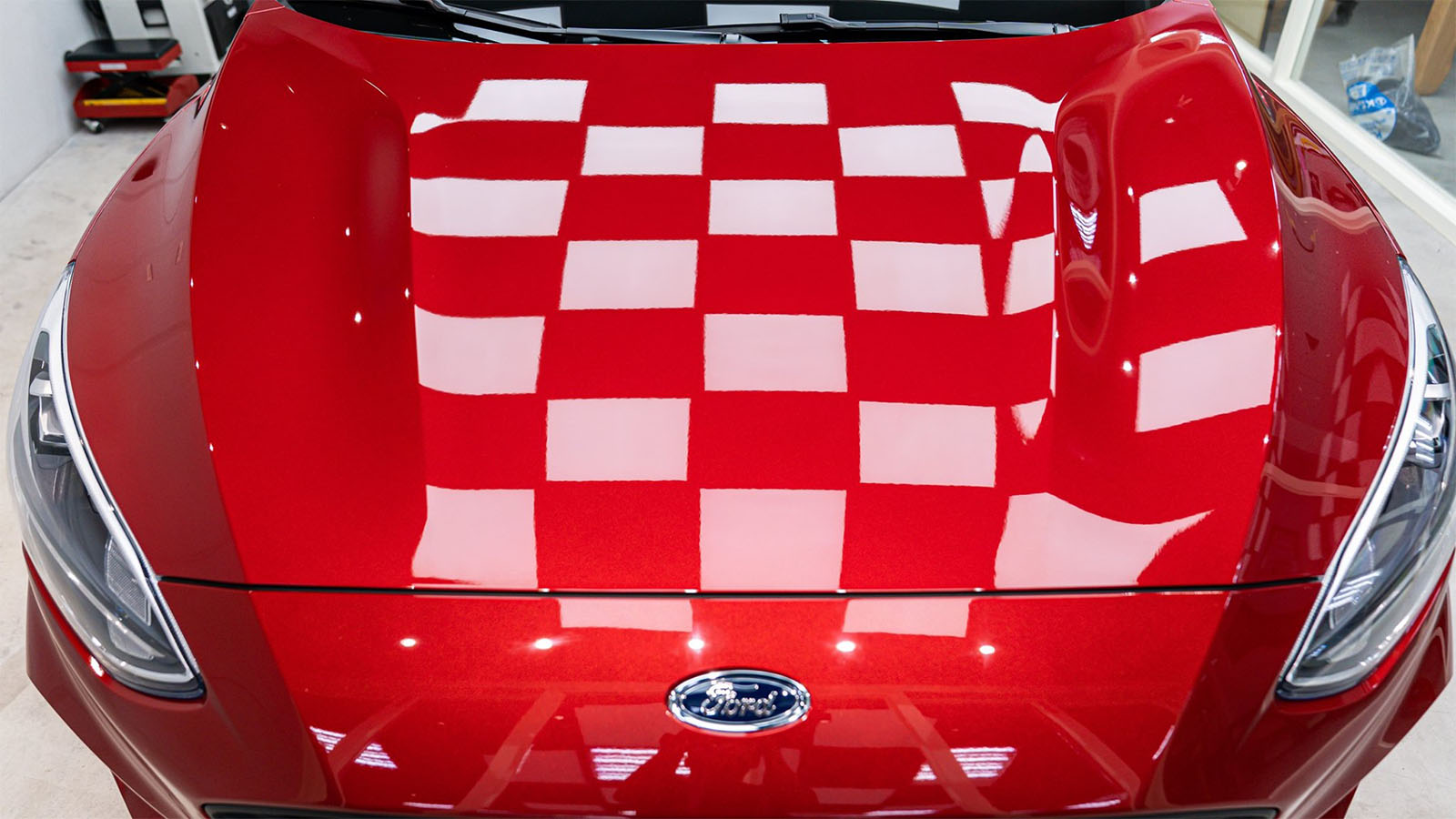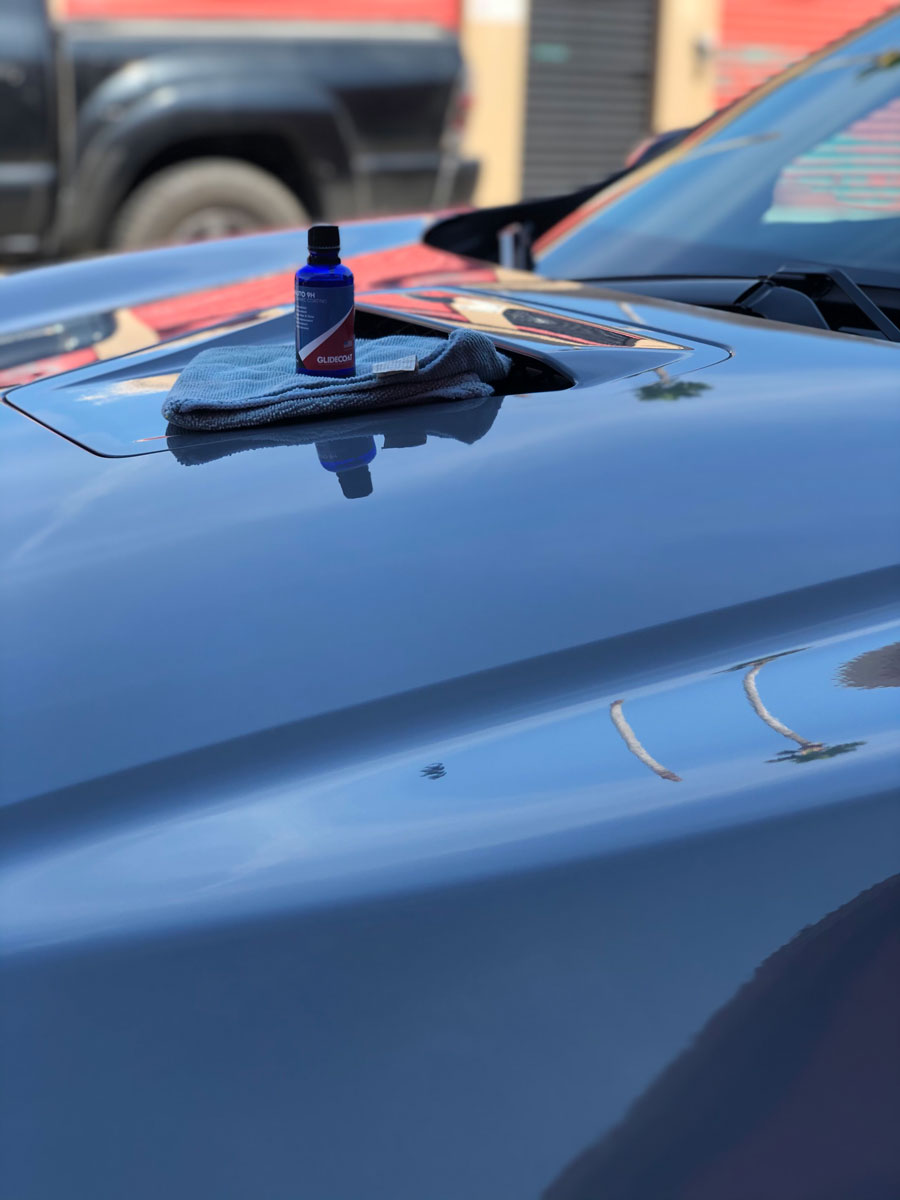Ceramic Coating vs. Conventional Wax: Which is Right for Your Vehicle?
Ceramic Coating vs. Conventional Wax: Which is Right for Your Vehicle?
Blog Article
The Duty of Ceramic Coating in Securing Your Vehicle's Paint From Environmental Damage
Ceramic coating has become a sophisticated option for vehicle proprietors looking for to protect the honesty of their automobile's exterior. By developing a durable chemical bond with the paint, this sophisticated technology supplies a formidable obstacle versus numerous ecological risks, such as UV rays, acid rainfall, and contaminants. Understanding the detailed benefits and the complexities of the application process is vital for optimizing its efficiency. As we discover the nuances of ceramic finishing, it ends up being apparent that the selection to execute this protective action could significantly affect your car's durability and visual.
What Is Ceramic Finishing?
Ceramic layer is a sophisticated fluid polymer related to the external surfaces of a vehicle, created to provide a sturdy layer of protection for the paint. This innovative service forms a chemical bond with the vehicle's manufacturing facility paint, creating a hydrophobic and durable shield. The finishing includes nanoparticles that fill out the tiny flaws in the paint, leading to a smooth surface that boosts gloss and radiate.
Commonly, ceramic finishings are available in various formulas, permitting different levels of defense and durability. While some items can last for numerous months, others provide security for a number of years, relying on the density of the application and ecological aspects. The application procedure needs careful preparation, including washing, sanitizing, and brightening the vehicle's surface to make certain optimum attachment of the coating.

Benefits of Ceramic Finishing
One of the key benefits of using a ceramic layer is the remarkable security it supplies to auto paint. This innovative covering creates a sturdy layer that guards the automobile's surface area from a range of environmental threats, consisting of UV rays, acid rainfall, bird droppings, and tree sap. By supplying this durable protection, ceramic finishings dramatically minimize the threat of fading and etching, preserving the cars and truck's aesthetic appeal gradually.
Along with protection, ceramic coatings are renowned for their hydrophobic residential properties, which push back water and dust, making it much easier to keep a clean lorry. This self-cleaning effect lowers the regularity of cleaning, saving both time and resources. Ceramic finishings enhance the deepness of the paint's gloss, resulting in a lively and refined look that raises the total look of the automobile.
An additional notable advantage is the long life of ceramic layers. Unlike conventional waxes or sealants that call for frequent reapplication, ceramic coverings can last several years, using a cost-efficient option for car owners looking for long-lasting security. On the whole, purchasing ceramic coating leads to enhanced toughness, reduced maintenance, and continual aesthetic allure for vehicle paint.
How Ceramic Layer Works
A ceramic finish runs through a chemical bonding process that produces a safety layer on the automobile's paint surface area. This innovative option utilizes advanced nanotechnology, where microscopic particles of silica are put on hold in a fluid kind - ceramic coating. Upon application, these particles bond with the factory paint, developing a resilient and hydrophobic layer that improves the vehicle's surface area
The major element of ceramic finishes, silicon dioxide (SiO2), contributes to the finishing's toughness and durability. When cured, the finish transforms right into a tough, glass-like coating that guards the paint from environmental contaminants such as dust, UV rays, bird droppings, and tree sap. This molecular bond leads to a surface area that is not only resistant to scrapes yet likewise easier to cleanse, as dust and crud are less likely to adhere.
Additionally, the hydrophobic buildings of ceramic layers cause water to grain and slide off, decreasing the opportunities of water spots and natural resource. This safety obstacle effectively lengthens the life of the paint and preserves the lorry's visual allure, using automobile owners a long-lasting option for paint security.
Application Process of Ceramic Finish
When taking into consideration the application of ceramic covering, prep work is essential to attaining ideal outcomes. The initial step entails completely cleaning the vehicle to eliminate dust, gunk, and contaminants from the surface area. This frequently consists of a decontamination procedure utilizing clay bars or chemical cleansers to ensure the paint is best site flawlessly clean. Any type of scratches or imperfections must be dealt with at this stage, as the coating will bond with the surface area below.

Ceramic finish is after that applied in small sections, usually utilizing an applicator pad. The car should be left to cure in a regulated atmosphere to allow the finishing to completely bond with the paint.
Long-Term Upkeep and Treatment
Attaining an effective ceramic layer application establishes the structure for lasting defense, but appropriate upkeep is vital to preserving its advantages. Normal washing is essential; utilizing a pH-neutral cars and truck shampoo will certainly help preserve the finishing's honesty without causing damage. Prevent automated cars and truck cleans that use abrasive materials, as they can compromise the coating's surface area.

Additionally, using a ceramic covering maintenance spray can improve the existing layer, giving an added increase in security and shine. It's advisable to do this every three to six months, depending upon ecological exposure.
Lastly, vehicle parking in shaded areas or utilizing auto covers can prevent prolonged direct exposure to dangerous UV rays and ecological contaminants, further expanding the life of your ceramic layer. By adhering to these maintenance practices, you can guarantee your lorry's surface continues to be protected and visually appealing for years to come.
Conclusion
In summary, ceramic layer offers as an important safety step for auto paint, successfully shielding vehicles from a variety of ecological dangers. Its ability to develop a robust hydrophobic barrier not only boosts visual appeal but additionally considerably reduces the frequency and intensity of maintenance required. The long-lasting nature of this innovative polymer emphasizes its top article worth in protecting lorry honesty and look, inevitably adding to a more visually appealing and resilient vehicle surface.
Ceramic finishing is an innovative liquid polymer used to the outside surfaces of a car, created to offer a sturdy layer of protection for the paint. Ceramic coverings enhance the deepness of the paint's gloss, resulting in a refined and dynamic look that boosts the general look of the automobile.
A ceramic coating runs with a chemical bonding procedure that develops a protective layer on the automobile's paint surface area.The primary element of ceramic finishings, silicon dioxide (SiO2), discover this info here contributes to the finishing's stamina and strength.In recap, ceramic finishing offers as an important safety action for automotive paint, effectively shielding lorries from a variety of environmental threats.
Report this page